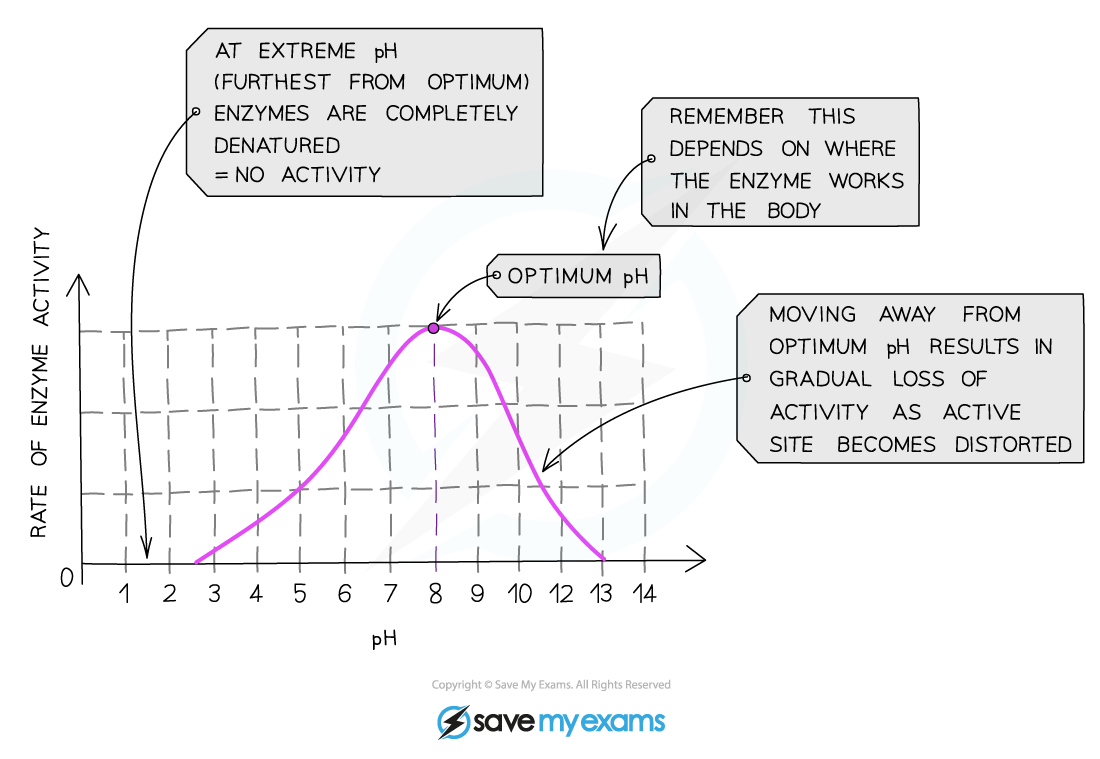Effect of Temperature on Enzyme Activity
- Temperature affects the movement of molecules, so influences the number of collisions that occur between enzymes and their substrate molecules in a solution
Increasing temperature
- As temperature increases more collisions occur between enzymes and substrates, increasing the rate of an enzyme-controlled reaction
- This is because the molecules have more kinetic energy so they move faster and collide with more energy
- Enzyme-controlled reactions occur at the highest rate at their optimum temperature
- In the human body, this optimum temperature for enzymes is around 37 ⁰C
High temperatures
- Heating solutions to high temperatures that are too far above the optimum will break the bonds that hold the enzyme together and the active site will lose its shape
- This is known as denaturation and the enzyme is said to have denatured
- Substrates cannot attach to denatured active sites as the complementary shape has been lost
- Denaturation is irreversible; once enzymes are denatured they cannot regain their shape and activity will stop
Low temperatures
- Reactions occur slowly at low temperatures; this is because molecules move around more slowly and collisions occur less frequently and with less energy
- Note that enzymes do not denature at low temperatures, so heating up a solution again will increase the rate of reaction
Enzyme denaturation diagram

Enzymes denature at high temperatures; this means that the specific shape of the active site is lost
- The effect of temperature on the rate of an enzyme-controlled reaction can be plotted on a graph as shown
Effect of temperature on enzyme activity graph

The effect of temperature on enzyme activity can be shown on a graph



